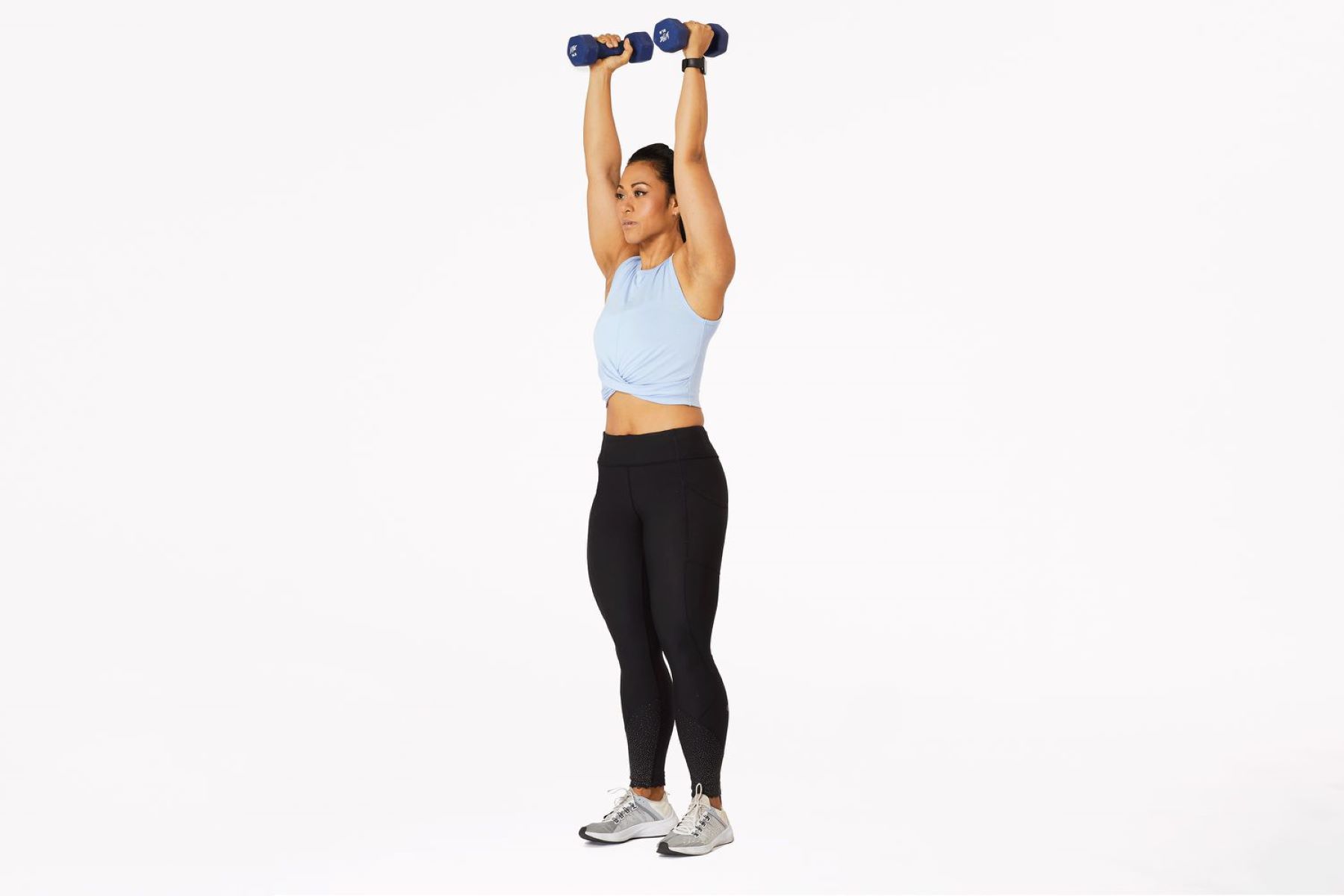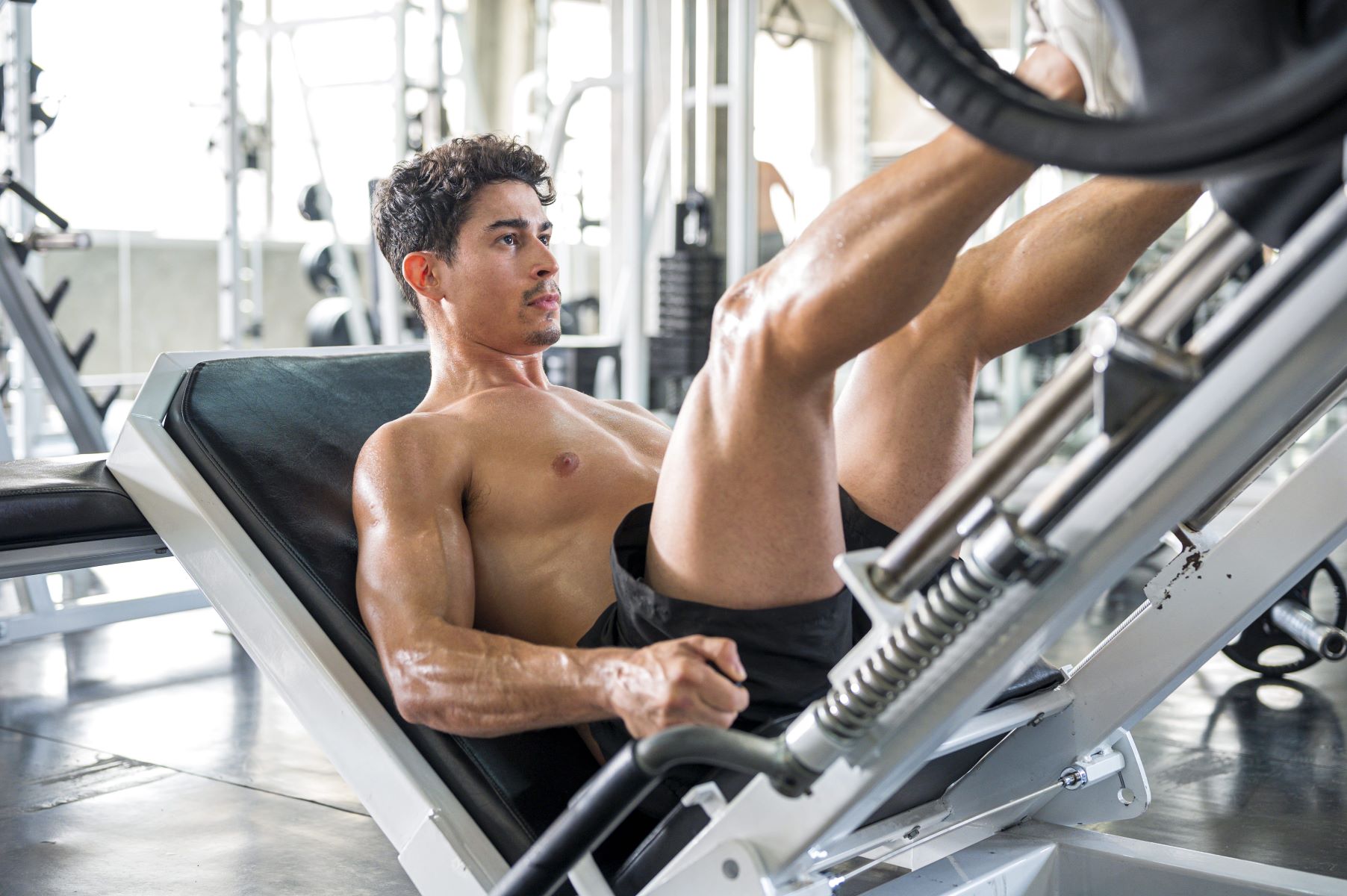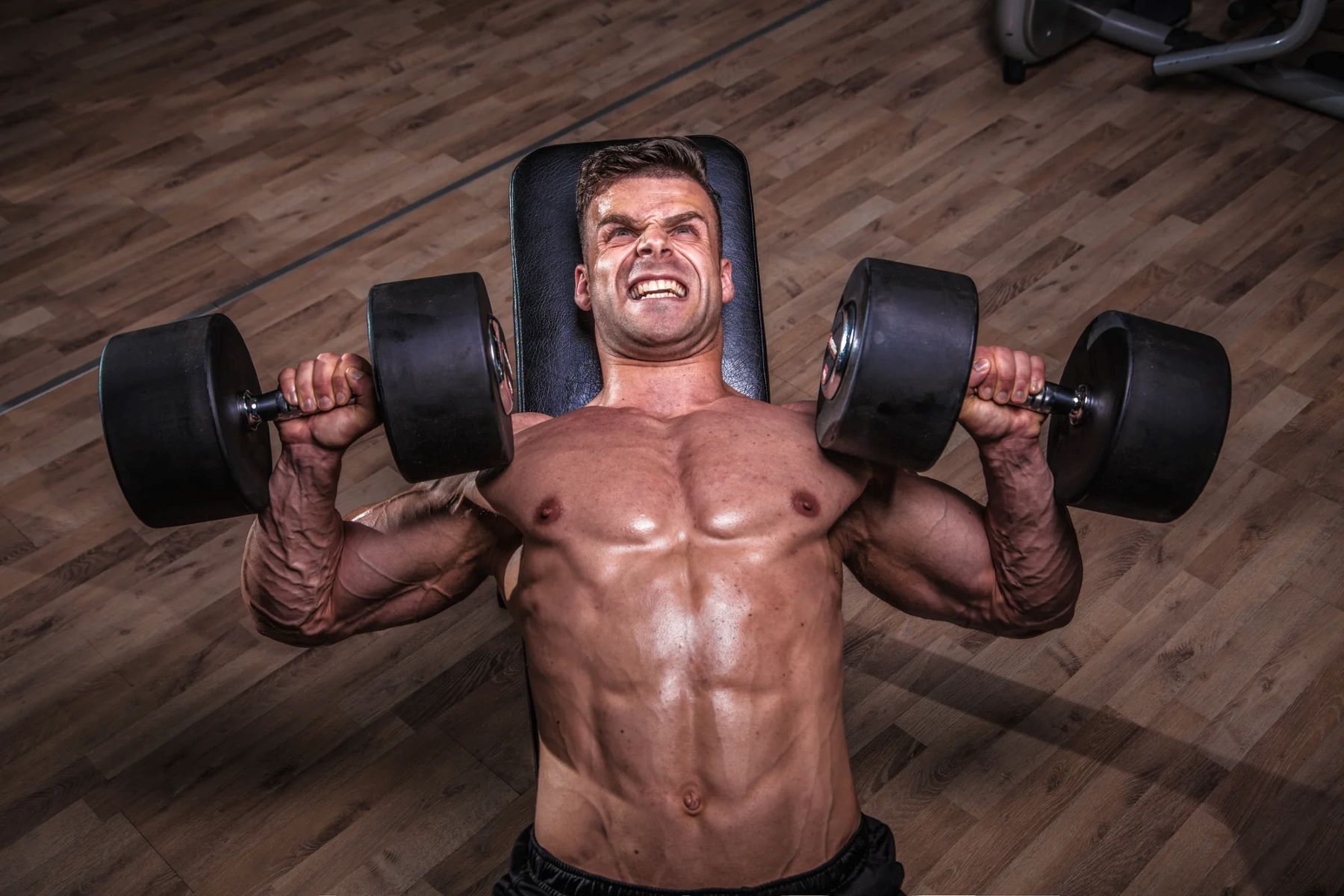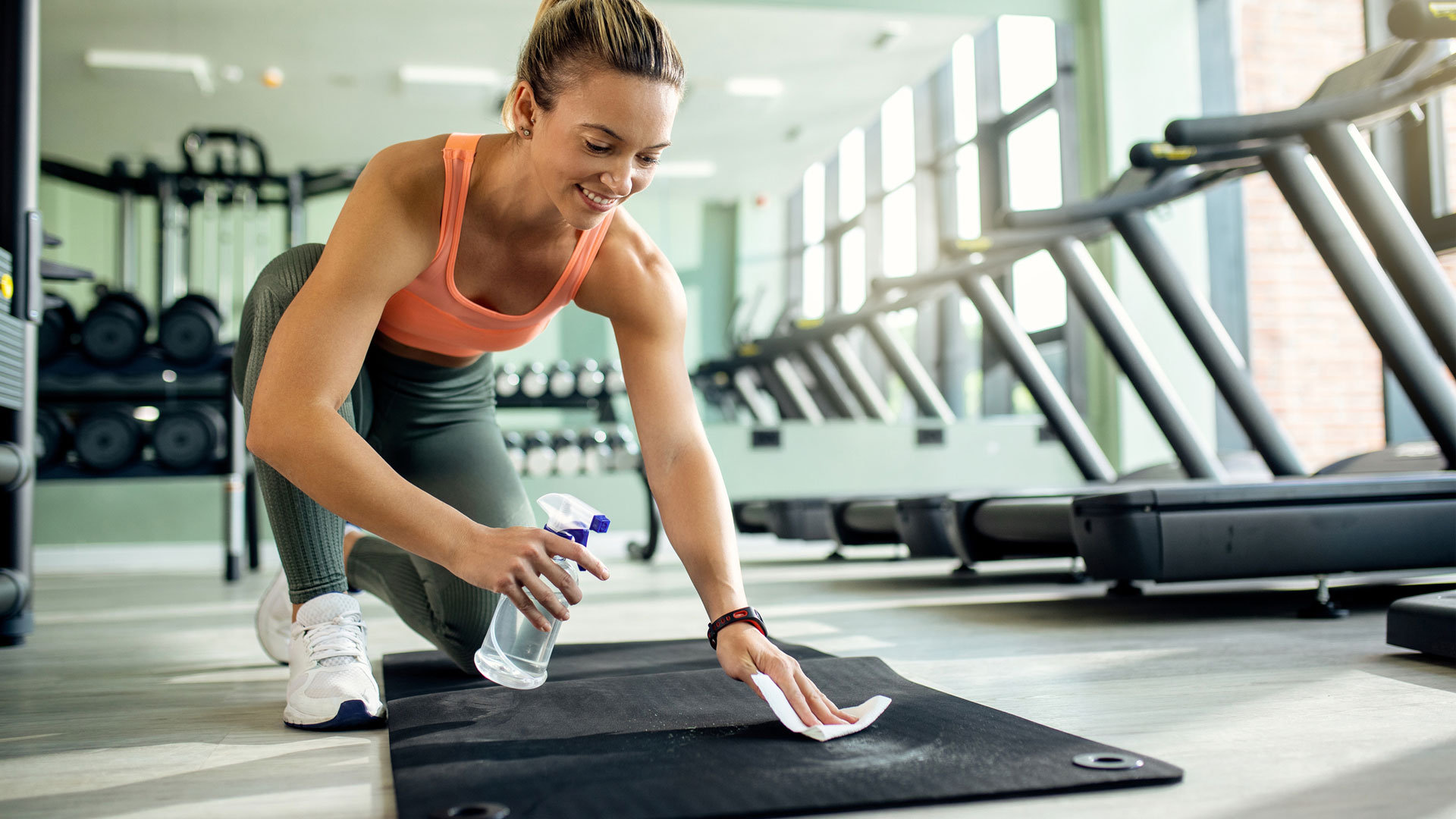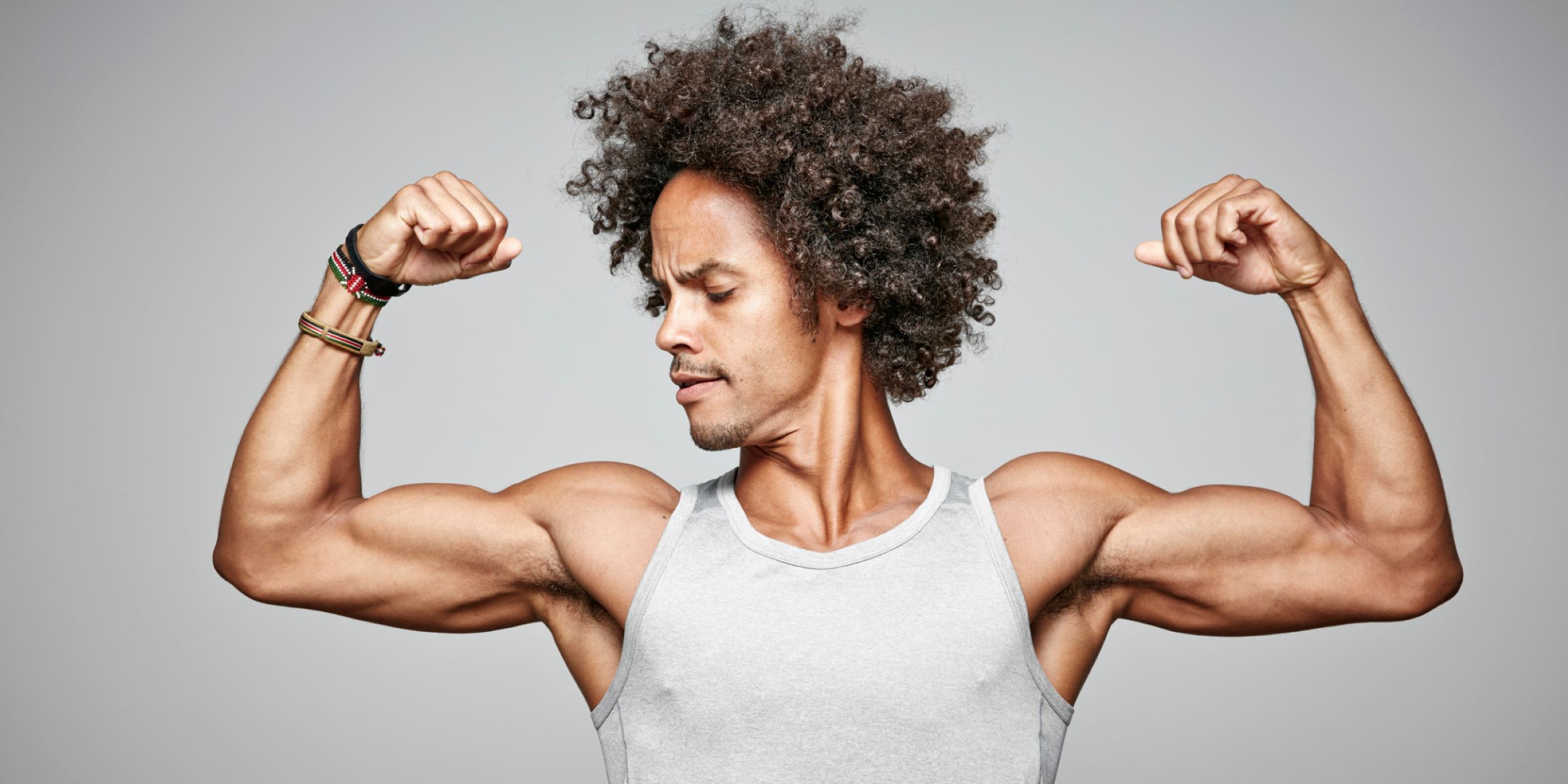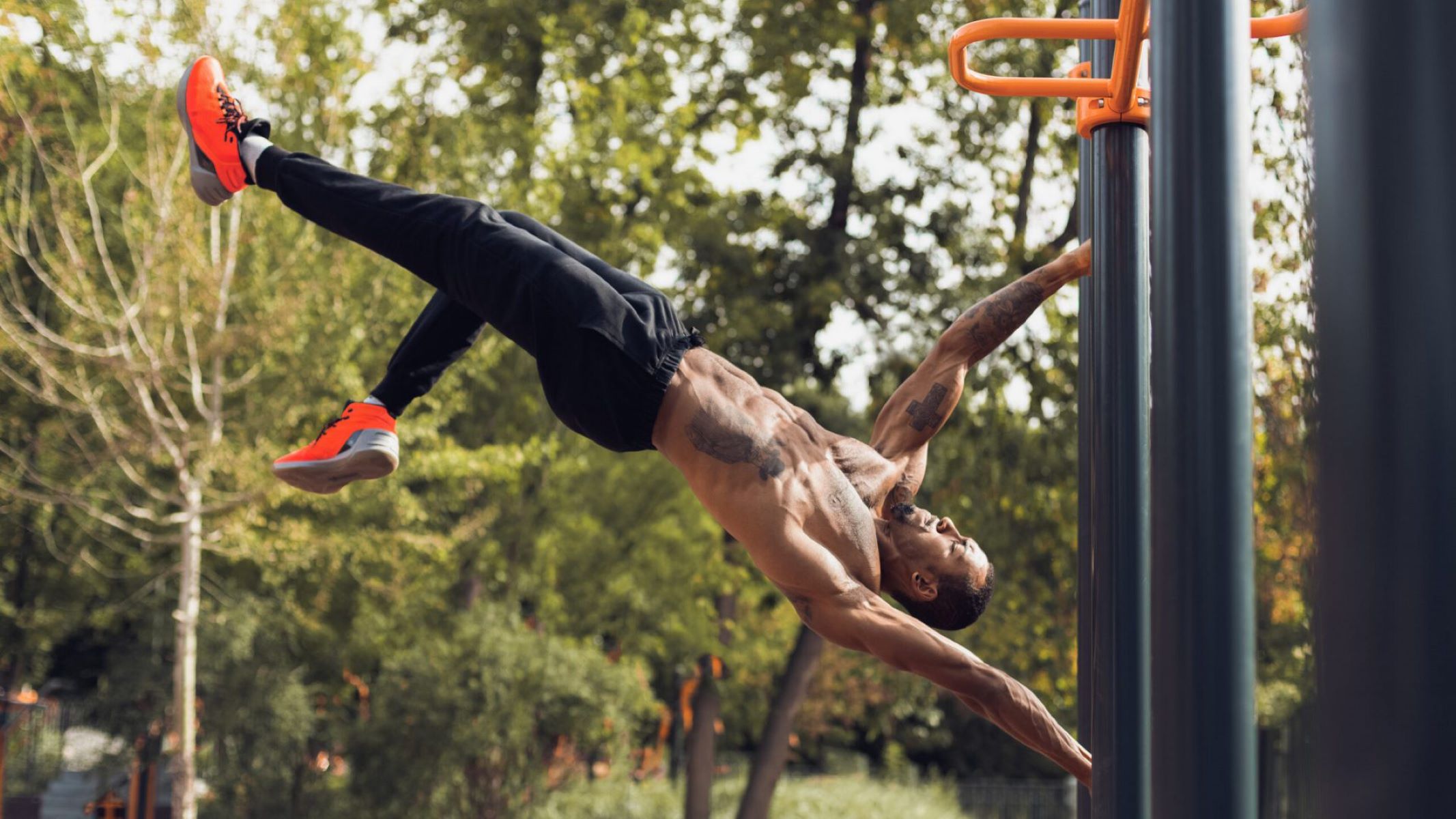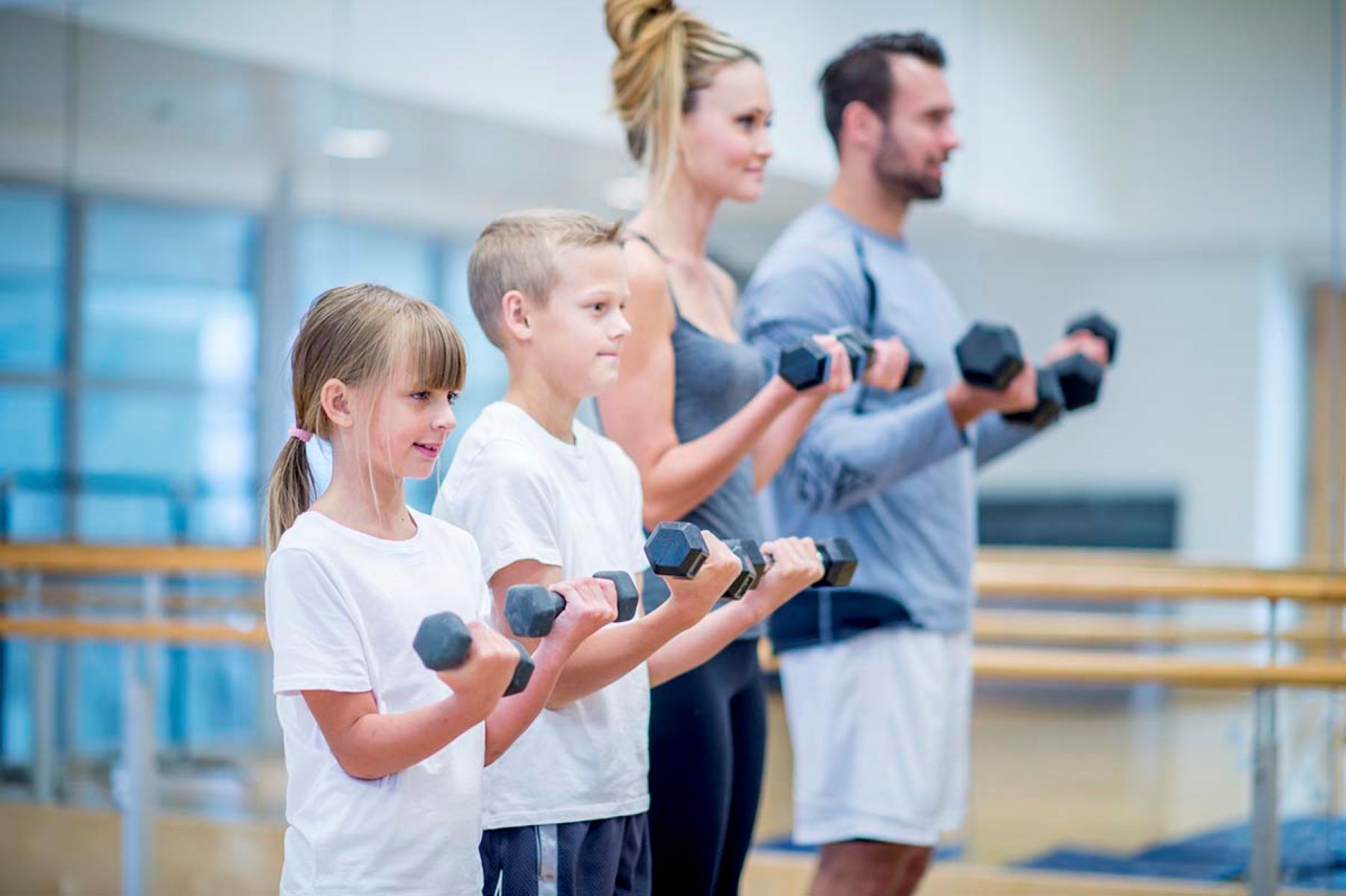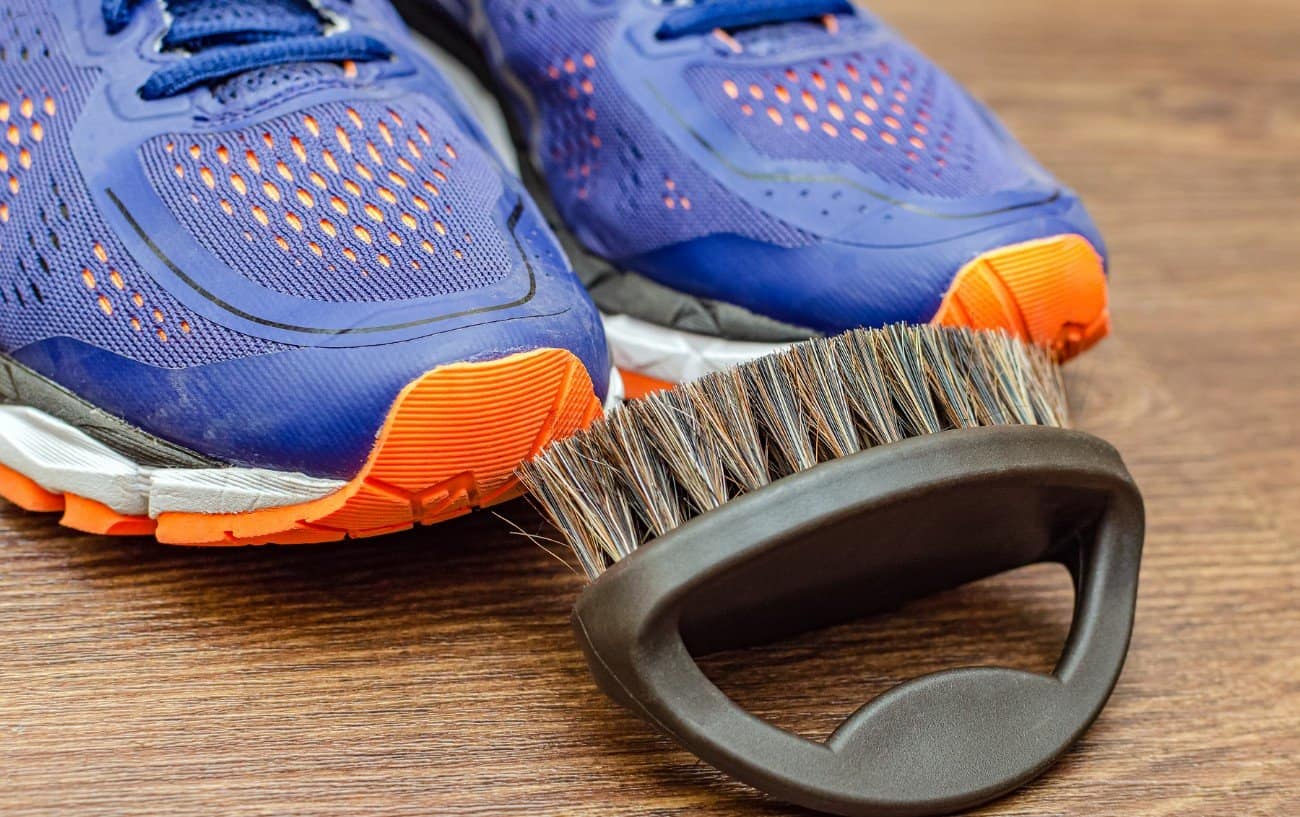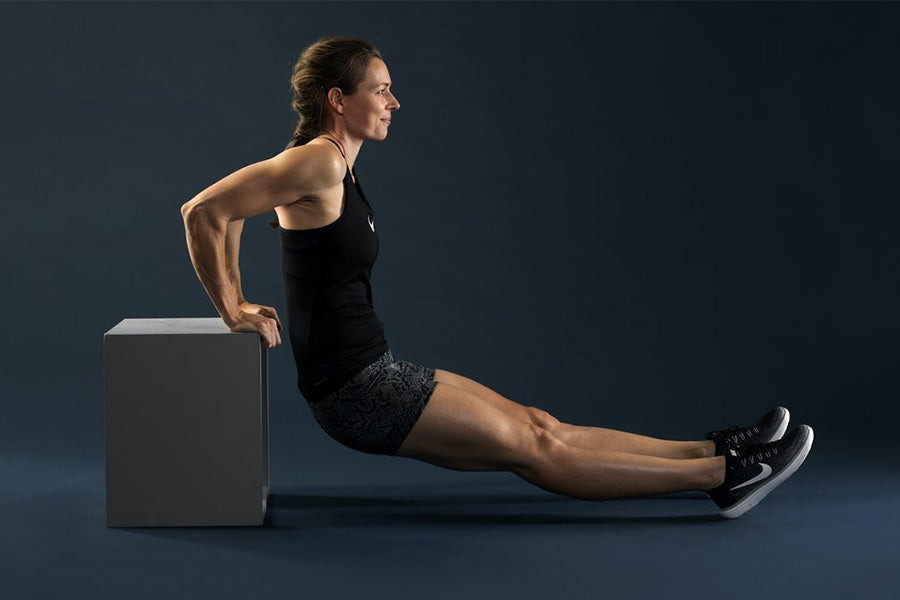

Featured
What Is Dips Exercise
Modified: January 2, 2024
Discover the benefits of the featured dips exercise and how it can improve your upper body strength and overall fitness. Learn proper form and variations for a challenging workout.
Introduction
When it comes to strength training exercises, dips are often considered one of the most effective and challenging movements. Whether you’re a fitness enthusiast or a professional athlete, incorporating dips into your workout routine can offer a multitude of benefits. In this article, we will explore the definition of dips exercise, discuss its benefits, and provide guidelines on how to perform them correctly.
Dips are a compound exercise that primarily targets the triceps, chest, and shoulders. They involve lowering your body using your arms and then pushing yourself back up. Unlike other upper body exercises that focus on specific muscle groups, dips engage a wide range of muscles simultaneously, making them an excellent choice for building overall upper body strength and muscle definition.
Not only do dips help in building strength, but they also provide functional benefits. The movements involved in dips mirror real-life pushing actions such as pushing open a heavy door, or lifting yourself up from a low surface. By incorporating dips into your fitness routine, you will develop practical strength that will benefit you in various daily activities.
Moreover, dips can play a crucial role in enhancing athletic performance. Many sports, including gymnastics, martial arts, and basketball, require upper body strength and stability. By regularly performing dips, athletes can improve their arm and shoulder strength, which can contribute to better performance in their respective sports.
In addition to the physical benefits, dips exercise can also have a positive impact on your mental well-being. Like any form of exercise, dips release endorphins, which are known as “feel-good” hormones. These endorphins can boost your mood, reduce stress levels, and improve overall mental clarity.
Whether you’re aiming to build strength, improve athletic performance, or enhance your overall well-being, dips exercise can be an excellent addition to your fitness routine. The following sections will delve deeper into the other aspects of the dips exercise, including the muscles targeted, correct form, variations, common mistakes to avoid, equipment required, and safety tips.
Definition of Dips
Dips are a type of bodyweight exercise that primarily targets the muscles of the upper body, including the triceps, chest, and shoulders. The exercise involves lowering your body down and then pushing yourself back up using parallel bars or other similar equipment.
When performing dips, you position yourself with your hands gripping the bars at shoulder-width or slightly wider, and your body suspended in the air. Next, you slowly lower your body by bending your elbows until your upper arms are parallel to the ground or slightly below. Finally, you push yourself back up to the starting position by extending your arms.
Dips can be performed using different types of equipment, such as parallel bars, dip bars, or even the edge of a sturdy surface like a countertop or bench. The type of equipment you use may depend on your fitness level and the availability of equipment.
Dips can be modified to suit different fitness levels and goals. Beginners may start with assisted dips using resistance bands or a spotter to provide support. As you progress and build strength, you can gradually increase the difficulty by using less assistance or adding weights.
It’s important to note that dips can be a challenging exercise, especially for individuals who are new to strength training or have shoulder or wrist issues. Consulting with a fitness professional or trainer before incorporating dips into your routine is recommended to ensure proper form and minimize the risk of injury.
In the following sections, we will explore the various benefits of dips exercise, discuss the specific muscles targeted, provide guidelines on how to perform dips correctly, and offer variations and safety tips to help you get the most out of this potent exercise.
Benefits of Dips Exercise
Dips exercise offers a wide range of benefits for both physical fitness and overall well-being. Incorporating dips into your workout routine can contribute to improved strength, muscle development, functional fitness, and athletic performance. Below are some of the key benefits of dips:
- Upper Body Strength: Dips primarily target the muscles of the upper body, including the triceps, chest, and shoulders. By consistently performing dips, you can develop greater strength in these muscle groups, leading to enhanced pushing and pressing power.
- Muscle Development: Dips engage multiple muscle groups simultaneously, making them an effective compound exercise. In addition to the triceps, chest, and shoulders, dips also activate the muscles in the upper back, core, and even the lower body to some extent. This comprehensive muscle involvement can lead to improved muscle definition and overall body composition.
- Functional Fitness: The movements involved in dips mimic real-life pushing actions like pushing open a door or lifting yourself up from a lower surface. By performing dips, you can develop functional strength that translates into improved performance in daily activities and sports.
- Athletic Performance: Many sports require upper body strength and stability. By incorporating dips into your workout routine, you can enhance your arm and shoulder strength, which can contribute to better performance in activities such as gymnastics, martial arts, basketball, and volleyball.
- Improved Core Stability: To maintain proper form during dips, it is essential to engage your core muscles. By consistently performing dips, you can strengthen your core muscles, leading to improved stability and balance in other exercises and daily movements.
- Increased Range of Motion: Dips require a full range of motion in the shoulder joint, which can help improve flexibility and mobility in this area. This increased range of motion can be beneficial for various upper body exercises and activities in daily life.
- Boosted Metabolism: Dips, like any form of exercise, can help increase your metabolic rate. This can contribute to greater calorie burn, weight management, and improved overall energy expenditure.
- Enhanced Mental Well-being: Exercise, including dips, releases endorphins in the body, which are known as “feel-good” hormones. Regularly performing dips can boost your mood, reduce stress levels, and improve mental clarity and focus.
By incorporating dips into your fitness routine, you can experience these wide-ranging benefits, improving both your physical fitness and overall well-being.
Muscles Targeted by Dips
Dips exercise is a compound movement that primarily targets the muscles of the upper body, with a primary emphasis on the triceps, chest, and shoulders. However, dips also engage other supporting muscles, making it a comprehensive upper body exercise.
Below are the key muscles targeted by dips exercise:
- Triceps Brachii: The triceps brachii, located on the back of the upper arm, is the primary muscle targeted during dips. It is responsible for extending the elbow joint and plays a crucial role in pushing movements.
- Pectoralis Major: The pectoralis major, commonly referred to as the chest muscles, is also heavily engaged during dips. It is responsible for adducting the shoulder (bringing the arms closer to the body) and plays a significant role in the pushing motion of dips.
- Anterior Deltoids: The anterior deltoids, or front deltoids, located on the front of the shoulders, are actively involved in the upward pushing motion of the dip exercise.
- Rhomboids and Trapezius: The muscles of the upper back, including the rhomboids and trapezius, are engaged during dips to stabilize the shoulders and maintain proper form throughout the movement.
- Latissimus Dorsi: The latissimus dorsi, or lats, are the muscles of the mid-back that provide stability and assist in shoulder extension during the dip exercise.
- Core Muscles: The core muscles, including the rectus abdominis, obliques, and transverse abdominis, are activated during dips to maintain proper posture and stability throughout the movement.
- Forearms and Grip Strength: The muscles of the forearms and grip are also engaged during dips exercise, as they are responsible for holding onto the bars or equipment.
By targeting these muscles, dips exercise can help develop upper body strength, muscle definition, and overall functional fitness. It is worth noting that the intensity of muscle activation may vary depending on factors such as grip width, body positioning, and individual biomechanics.
Now that we understand the muscles targeted by dips, let’s move on to the next section, where we will discuss how to perform dips correctly to maximize the benefits and minimize the risk of injury.
How to Perform Dips Correctly
Performing dips correctly is crucial to ensure maximum effectiveness and minimize the risk of injury. Follow the step-by-step instructions below to perform dips correctly:
- Step 1: Equipment Setup: Position yourself between the parallel bars or dip bars. Place your hands on the bars with a grip slightly wider than shoulder-width apart. Keep your arms straight and your feet off the ground.
- Step 2: Lowering Phase: Begin the movement by bending your elbows and slowly lowering your body downwards. Aim to lower yourself until your upper arms are parallel to the ground or slightly below. Keep your torso upright and avoid leaning forward or rounding your shoulders.
- Step 3: Pushing Phase: Once you have reached the bottom position, push yourself back up by extending your elbows. Focus on using your triceps, chest, and shoulders to propel your body upward. Keep your movements controlled and avoid using momentum or swinging.
- Step 4: Breathing: Inhale as you lower your body down and exhale as you push yourself back up. Breathing properly helps stabilize your core and enhances your overall performance.
- Step 5: Body Alignment: Maintain proper body alignment throughout the exercise. Keep your core engaged, shoulders back and down, and chest lifted. Avoid rounding your back or shrugging your shoulders.
- Step 6: Range of Motion: Aim to achieve a full range of motion in your shoulder joints. Lower yourself until your upper arms are parallel to the ground or slightly below, and then push back up to the starting position with full extension of the elbows.
- Step 7: Gradual Progression: If you are a beginner or have limited strength, you may need to start with assisted dips using resistance bands or a spotter. As you build strength, gradually decrease the assistance or add weights to challenge yourself.
- Step 8: Rest and Recovery: Allow adequate rest between sets and ensure proper recovery for your muscles. Listen to your body and avoid overtraining or pushing yourself beyond your limits.
Remember that proper form and technique are essential for effective and safe dips exercise. If you are new to dips or have any concerns, it is recommended to seek guidance from a qualified fitness professional to ensure correct execution and minimize the risk of injury.
In the next section, we will explore variations of dips exercise that can add variety and challenge to your workout routine.
Variations of Dips Exercise
While traditional dips exercise is highly effective on its own, incorporating variations can add variety to your workouts, target different muscle groups, and provide new challenges. Below are some popular variations of dips:
- Weighted Dips: To increase the intensity of your dips, you can add weight by using a weight belt or holding a dumbbell between your feet or using a weighted vest. This variation helps in developing greater upper body strength and muscle mass.
- Narrow Grip Dips: By bringing your hands closer together on the bars, you shift the emphasis from the chest to the triceps. Narrow grip dips specifically target the triceps muscles, providing a challenging exercise for building arm strength.
- Wide Grip Dips: In contrast to narrow grip dips, wide grip dips involve placing your hands wider than shoulder-width apart. This variation primarily targets the muscles of the chest, offering an excellent exercise for developing a broader chest and overall upper body strength.
- Ring Dips: Performing dips on gymnastic rings adds an element of instability, which engages the stabilizer muscles to a greater extent. Ring dips target the same muscle groups as traditional dips but require more core stability and shoulder control.
- Assisted Dips: If you are not yet able to perform full bodyweight dips, assisted dips provide a helpful progression. These can be done using resistance bands attached to the bars or with the assistance of a training partner or spotter.
- L-Sit Dips: L-sit dips involve lifting your legs straight out in front of you, forming an “L” shape with your body. This variation adds an extra challenge by engaging the core muscles and increasing the demand on the triceps and shoulders.
- Reverse Grip Dips: Reverse grip dips, also known as “supine grip” or “chin-up grip” dips, involve placing your palms facing towards you on the bars. This variation shifts the focus to the muscles of the upper back, biceps, and forearms, providing a unique stimulus and targeting different muscle groups.
- Single Bar Dips: If you don’t have access to parallel bars, single bar dips can be performed using a single bar or an indented corner of a sturdy countertop. This variation provides a similar workout for the upper body muscles while challenging your balance and stability.
By incorporating these variations into your dips routine, you can add diversity, target specific muscle groups, and keep your workouts challenging and engaging.
In the next section, we will discuss common mistakes to avoid while performing dips to ensure safety and maximize the benefits of the exercise.
Common Mistakes while Doing Dips
Dips exercise is a powerful upper body movement, but it’s important to perform them with proper form and technique to avoid potential injuries and maximize their effectiveness. Here are the common mistakes to avoid while doing dips:
- Incorrect Body Positioning: One common mistake is leaning too far forward or rounding the shoulders during dips. This can shift the emphasis away from the targeted muscles and increase the risk of shoulder strain. Maintain an upright posture with your chest lifted and shoulders back and down throughout the exercise.
- Insufficient Range of Motion: Not going down low enough during the dipping phase is another common mistake. To achieve maximum benefits, aim to lower yourself until your upper arms are parallel to the ground or slightly below. Failing to do so limits the engagement of the targeted muscles and reduces the effectiveness of the exercise.
- Using Excessive Momentum: Swinging or using momentum to lift yourself up during dips is a mistake that reduces the effectiveness and potential gains of the exercise. Focus on maintaining control throughout the movement, using your muscles to perform the exercise rather than relying on momentum.
- Overarching the Lower Back: Arching the lower back excessively during dips can put unnecessary strain on the spine and increase the risk of lower back pain or injury. Engage your core muscles and maintain a neutral spine position throughout the exercise.
- Poor Shoulder Positioning: Allowing the shoulders to shrug or elevate during dips is a common mistake. Keep your shoulders down and back, away from your ears, to maintain proper shoulder positioning and reduce the risk of shoulder impingement or discomfort.
- Not Breathing Properly: Neglecting proper breathing technique during dips can hinder performance and reduce stability. Inhale during the lowering phase and exhale during the pushing phase to maintain core stability and enhance overall performance.
- Skipping Warm-up: Failing to warm up properly before performing dips is a mistake that can lead to muscle strains or other injuries. Prioritize a thorough warm-up routine that includes dynamic stretches and mobility exercises to prepare your muscles and joints for the demands of the exercise.
- Ignoring Proper Progression: Attempting advanced variations of dips without mastering the basic form and building sufficient strength can be detrimental. Progress gradually by mastering the basics before moving on to more challenging variations or adding weights.
By avoiding these common mistakes and focusing on proper form and technique, you can effectively target the intended muscles, reduce the risk of injury, and maximize the benefits of dips exercise.
In the next section, we will discuss the equipment required to perform dips, as well as some alternatives if you don’t have access to traditional dip bars or parallel bars.
Equipment Required for Dips Exercise
Dips exercise can be performed with minimal equipment, making it accessible to a wide range of individuals. The primary equipment required for dips is parallel bars or dip bars. However, there are alternative options available if you don’t have access to these specific pieces of equipment. Let’s explore the equipment required for dips exercise:
- Parallel Bars: Parallel bars are the most common and ideal equipment for performing dips. These bars are typically parallel to each other and at a height that allows you to suspend your body in the air with your arms extended. Many gyms and fitness facilities have parallel bars available for use.
- Dip Bars: Dip bars, also known as dip stations, are standalone equipment designed specifically for performing dips. They usually consist of two parallel bars that are connected by a sturdy frame. Dip bars are available in various sizes and designs and can be purchased for home use.
- Countertop or Bench: If you don’t have access to dedicated dip bars or parallel bars, you can use a sturdy countertop or bench as an alternative. Ensure that the surface is stable and can support your body weight during the exercise. Be cautious of the height and stability to avoid accidents or injuries.
- Gymnastic Rings: Gymnastic rings are highly versatile and can be used for a variety of exercises, including dips. By suspending the rings from a secure anchor point, you can perform ring dips. Ring dips provide an additional challenge by engaging more stabilizer muscles due to the instability of the rings.
- Resistance Bands: Resistance bands can be used to assist with dips, especially for individuals who are building strength or working towards full bodyweight dips. By attaching one end of the resistance band to the bars or securely anchoring it overhead, you can place your feet or knees in the loop of the band to provide assistance during the exercise.
- Weight Belt or Vest: For those looking to add extra resistance or progression to their dips, a weight belt or weight vest can be used. These adjustable accessories allow you to add weight plates or sandbags, increasing the intensity and load on your muscles.
It’s important to ensure that the equipment you use is stable, secure, and capable of supporting your body weight during dips. Check for any signs of wear and tear, and always prioritize safety when performing the exercise.
Next, we will discuss some important safety tips to keep in mind during your dips workout.
Safety Tips for Dips Exercise
While dips exercise can be highly beneficial, it’s important to prioritize safety to prevent injuries and ensure a productive workout. Here are some important safety tips to keep in mind when performing dips:
- Warm-Up Properly: Before starting your dips workout, warm up your muscles and joints with dynamic stretches and mobility exercises. This helps increase blood flow, improve flexibility, and reduce the risk of strains or injuries.
- Focus on Proper Form: Maintain proper body alignment and technique throughout the exercise. Keep your shoulders back and down, chest lifted, and core engaged. Avoid excessive swinging or using momentum to complete the movement.
- Start with Assisted Dips if Needed: If you are new to dips or have limited strength, begin with assisted dips using resistance bands or a spotter. Gradually decrease the assistance as you build strength and improve your form.
- Progress Gradually: Avoid rushing into advanced variations or adding weights before mastering the basic form. Gradually progress to more challenging variations or weighted dips to ensure your muscles and joints are prepared for the increased intensity.
- Listen to Your Body: Pay attention to any pain or discomfort during dips. If you experience sharp or lingering pain, stop the exercise and consult with a healthcare professional or qualified trainer to address any underlying issues.
- Use Proper Equipment: Ensure that the equipment you use, such as parallel bars or dip bars, is sturdy and secure. If using alternative equipment like countertops or benches, verify their stability and weight-bearing capacity before performing dips.
- Stay Hydrated: Remember to stay properly hydrated before, during, and after your dips workout. Dehydration can affect your performance and overall well-being.
- Rest and Recover: Allow adequate rest between sets and ensure proper recovery for your muscles. Overtraining can lead to fatigue, decreased performance, and increased risk of injury.
- Consult with a Professional: If you are new to dips exercise or have any concerns or pre-existing medical conditions, it’s advisable to consult with a qualified fitness professional or healthcare provider to ensure that dips are suitable for you and to receive personalized guidance.
Prioritizing safety during dips exercise is crucial for a successful and injury-free workout. By following these safety tips, you can maximize the benefits of dips while minimizing the risk of potential injuries.
In the final section, we will summarize the key points discussed in this article and highlight the importance of incorporating dips exercise into your fitness routine.
Conclusion
Dips exercise is a challenging and effective upper body movement that targets the triceps, chest, and shoulders. By incorporating dips into your workout routine, you can develop strength, improve muscle definition, enhance functional fitness, and boost athletic performance.
Throughout this article, we’ve explored the definition of dips, the muscles targeted, the correct form, variations, common mistakes to avoid, equipment required, and safety tips. Proper form and technique are essential to ensure maximum effectiveness and reduce the risk of injury.
The benefits of dips exercise extend beyond physical fitness. Regular dips workouts can also improve mental well-being, thanks to the release of endorphins that boost mood and reduce stress levels.
Whether you’re a beginner or a seasoned fitness enthusiast, dips can be customized to suit your fitness level and goals. Modifications such as assisted dips, weighted dips, and various grip widths allow for progression and diversification of your dips workout.
Remember to prioritize safety by warming up, using proper equipment, progressing gradually, and listening to your body. Consulting with a fitness professional or healthcare provider is also recommended, especially if you have any medical conditions or concerns.
Incorporating dips into your fitness routine can be a valuable addition, offering a multitude of benefits. By consistently performing dips with proper form and technique, you can build strength, develop muscle definition, enhance functional fitness, and improve overall well-being.
So, why wait? Give dips exercise a try and experience the incredible benefits it has to offer. Start with the basics, progress at your own pace, and enjoy the transformation of your upper body strength and physique.
